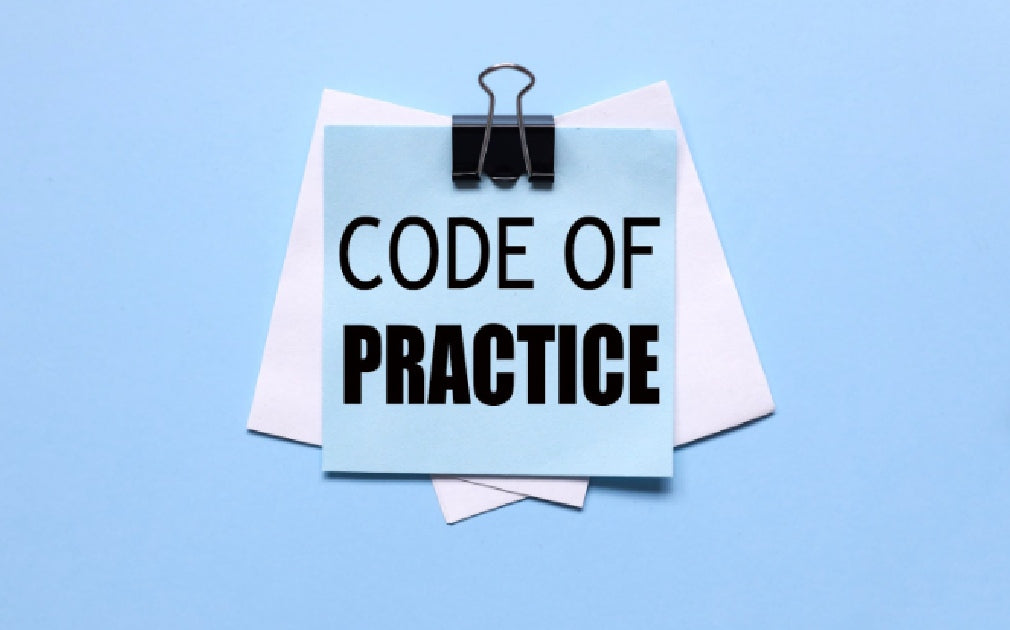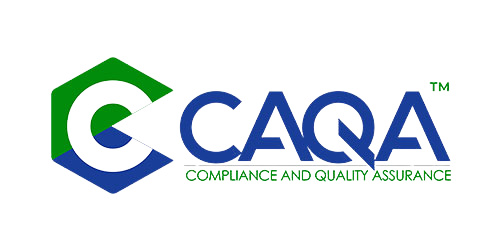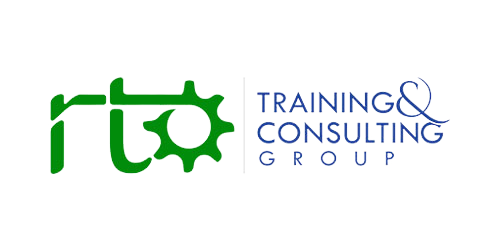Overview
When Australia’s national VET regulator makes a decision, its legitimacy rests on more than the outcome. It rests on how that decision was reached, who made it, what evidence was weighed, and whether affected people were treated fairly. The Australian Skills Quality Authority’s Code of Practice for Auditors, Assessors and Course Accreditation Assessors exists to answer those questions before they arise. The Code binds officials to six non-negotiable principles that operate at every site visit, document review and interview: honesty and integrity, respect and courtesy, confidentiality, procedural fairness, competence, and due care and diligence. It goes beyond values on a poster and sets out concrete behaviours such as declaring and managing conflicts of interest, refusing gifts and inducements, explaining roles to interviewees, maintaining confidentiality, and cooperating fully with investigations and Freedom of Information processes. In doing so, it embeds administrative law norms into every compliance judgement and signals to providers and students that evidence, not opinion, drives outcomes.
This article unpacks the Code for the Australian VET context in 2025, explains how it intersects with the revised Standards for RTOs, and shows why its day-to-day application has become even more important as integrity risks have risen. It also provides a practical checklist for providers to engage constructively with assessors and to prepare audit-ready evidence that aligns with the regulator’s lens.
What the Code is, and why it matters
ASQA’s Code of Practice is a published document that binds auditors, assessors and course accreditation assessors to a set of principles and practices that must be demonstrated in every regulatory activity. It codifies how officials are expected to conduct themselves, what information may be used and disclosed, and how findings are formed. The Code states the six principles explicitly, then describes behaviours that operationalise them, for example: providing interviewees with information about the assessor’s role and how their input will inform compliance judgements, managing any real or perceived conflict of interest, maintaining appropriate confidentiality, and refusing all gifts and inducements.
The Code is not optional, and it is not merely internal guidance. It is part of the public scaffold for procedural fairness and accountability in a risk-based regulatory system. It also sits within a wider framework that includes the Standards for VET Regulators, which require ASQA to use auditors who meet agreed competency requirements and to maintain a code of conduct that supports fair, transparent processes that uphold natural justice.
The six principles that underpin every ASQA decision
Honesty and integrity
Integrity is the bedrock of public trust. Under the Code, assessors must act with honesty, declare and manage conflicts of interest, and refuse benefits or inducements. The conflict rules extend to any material, business, financial or personal interest in, or prior engagement with, an entity that is or may be under review. This is not a procedural footnote. Conflicts can arise through previous consultancy, prior employment, family relationships, or even social connections. The Code’s requirements ensure that any such risks are surfaced early and controlled, for example, by recusal or by additional oversight.
Respect and courtesy
Regulation is a human process as well as a legal one. The Code requires assessors to treat all stakeholders with respect, to avoid personal criticism, to resist provocation, and to explain how stakeholder input informs determinations. These expectations are not about tone alone. They recognise that students, trainers and managers often provide evidence in high-stakes circumstances. Respectful conduct protects the safety and dignity of those people and supports the reliability of the information being collected.
Confidentiality
Trust depends on the proper handling of information. The Code prohibits the improper use or disclosure of information obtained during regulatory duties unless disclosure is required by law. This covers documentary evidence, interview records, governance materials and personal data gathered under the National Vocational Education and Training Regulator Act and the ESOS Act. ASQA’s privacy policy sets out lawful collection and handling practices, including the circumstances in which personal information may be collected, used or disclosed, and how obligations under the FOI Act interface with privacy.
Procedural fairness
Fairness is made practical through a method. The Code commits assessors to systematic, outcome-focused, evidence-based assessment. That includes appropriate sampling strategies, clear preliminary findings, explicit citation of the standard or requirement alleged to be unmet, and defined opportunities for response, review and appeal before a final decision is recommended. This approach aligns with the outcomes-based 2025 Standards for RTOs that commenced on 1 July 2025, which emphasise flexible, risk-proportionate demonstration of compliance rather than prescriptive paperwork.
Competence
Competence is about more than qualifications on paper. The Code and the wider Standards for VET Regulators require ASQA to use auditors and accreditation assessors who meet agreed competency requirements. In practice, this means current skills in VET regulation, training and assessment, audit practice, and contemporary sector risks. It also means that the people who make judgments about compliance understand the Credential Policy, the rules of evidence and principles of assessment, and the currency requirements that underpin capability in training and assessment.
Due care and diligence
Due care and diligence require assessors to conduct activities in a systematic way, based on appropriate sampling that supports confidence in the findings. The Code specifies that work must be outcome-focused, that evidence must be valid, current, sufficient and authentic, and that assessors must calibrate expectations to the provider’s size, scope, delivery mode and risk. This guards against “one size fits all” audits, and it matches the regulator’s shift to outcomes-based regulation and an education-first posture during the transition to the 2025 Standards.
Transparency and accountability that surround the Code
Freedom of Information and privacy
The Code obliges cooperation with official investigations and Freedom of Information processes. ASQA’s FOI page explains how to make a request and how the agency processes applications within the statutory framework. The privacy policy explains the lawful collection, use and disclosure of personal information for regulatory work. Together, these instruments create external oversight that supports confidence in how information is handled before, during and after audits.
Complaints about ASQA, and concerns about providers
The regulator makes itself open to scrutiny. Anyone can lodge feedback or make a complaint about ASQA’s conduct through a dedicated channel, separate from provider complaints. Concerns about training providers can be submitted through ASQA’s public reporting pathway and tip-off portal, which feeds intelligence into monitoring and enforcement. This separation matters. It allows regulated parties to challenge the process when needed while keeping provider integrity concerns in an operational pipeline.
Annual Declaration on Compliance and pre-audit communication
Transparency is also built into the provider lifecycle. ASQA’s Annual Declaration on Compliance requires RTOs to attest each year that they meet the Standards and to hold evidence to support the attestation. In 2025, the declaration window opened on 3 March and submissions were due by 14 April, with ASQA emailing a unique link to each CEO. Assessors may test those attestations during performance assessments or targeted reviews. Pre-audit communications set out the process, expected timelines and channels for engagement, helping both sides prepare efficiently.
Practice Guides: how the Code connects to the 2025 Standards
A common frustration in regulated systems is the gap between high-level standards and day-to-day judgment. ASQA’s Practice Guides are designed to close this gap. Finalised in the lead-up to the 1 July 2025 commencement, they translate expectations into testable provider behaviours across the Outcome Standards and the Compliance Standards. Topics include assessment authenticity, training, Recognition of Prior Learning and credit transfer, facilities and resources, student support, risk management, continuous improvement, integrity of nationally recognised training, accountability, fit and proper person requirements, and the Credential Policy. These guides are publicly available and are the same lenses that assessors are trained to use, which reduces ambiguity and supports consistent decisions.
For example, the Quality Area 3 material on VET workforce management and Trainer and Assessor Competencies sets out risks and self-assurance checks for credentialing and currency. Although directed to providers, the guidance also signals what assessors will expect to see when forming a view on workforce sufficiency and competence. The net effect is a common language for evidence between the sector and the regulator.
What “evidence-based” means in practice under the Code
The Code asks assessors to ground judgements in sufficient and authentic evidence. Under the 2025 Standards, this typically means:
-
Systematic sampling of enrolments, class groups, units, sites and modalities that can support a defensible conclusion.
-
Outcome-oriented testing of whether students actually learned and demonstrated the relevant competencies, not only whether a policy exists.
-
Traceable records such as timetables, attendance or engagement logs, assessment tools and mapping, assessor judgements with reasons, Verification of Workplace Evidence, and USI verification logs where relevant.
-
Governance artefacts include risk registers, internal audit reports, complaints and appeals, continuous improvement cycles, and records of staff competence and supervision arrangements.
These are not paperwork demands for their own sake. They are the evidentiary trail that shows how a provider’s systems produce results. The Code’s due care requirement makes it explicit that sampling and findings must be proportionate to the provider’s context, which protects small specialists from being assessed as if they were large multi-site providers, and ensures that larger providers are tested at an appropriate scale.
Procedural fairness: the lifecycle of a finding
Before the visit
Pre-audit communication sets expectations. Providers are told what the process involves, the evidence that will be reviewed, and the timeframes for engagement. The Code requires assessors to explain their role and how information gathered will inform compliance judgements. This preparation helps both sides focus on material issues and reduces surprises.
During the assessment
Interviews are conducted with clear explanations of purpose. Sampling plans are executed, and evidence is examined. The Code’s respect and courtesy principle applies in moments of pressure, such as when evidence contradicts a provider’s written statements or when student or staff safety is at issue. Confidentiality rules govern how information is handled.
Preliminary findings and provider response
Where gaps appear, preliminary findings are presented with explicit citations to the relevant standard or requirement. Providers have a defined opportunity to respond, to offer additional evidence, or to explain context that may change the assessment of risk or the reasonableness of controls. The Code embeds this step to prevent “gotcha” outcomes and to encourage the correction of misunderstandings or evidentiary gaps before a recommendation is finalised.
Final recommendations and review
Recommendations are presented to decision makers together with the evidence and the provider’s responses. Review and appeal pathways are available, and FOI and complaint pathways exist if parties wish to challenge the process. This is how the Code protects providers from arbitrary decision-making while still allowing the regulator to act decisively where risk is high.
The Code in an outcomes-based regulatory era
From 1 July 2025, the revised Standards for RTOs shifted Australian VET to an outcomes-based model. The three components of the new framework include Outcome Standards, Compliance Standards and the Credential Policy. The regulator has underlined that flexibility in how providers demonstrate compliance does not dilute expectations. In practice, that means assessors look for evidence that training is structured and paced for genuine progression, that assessment is valid and authentic, that student support is real, that staff are competent and current, and that governance detects and corrects risk. The Code’s language about outcome focus and sufficient, authentic evidence fits hand in glove with this model.
The public rollout of the 2025 Standards included a significant education program, with information sessions, podcasts, FAQs and the Practice Guides. This investment matters because it achieves a consistent understanding of expectations on both sides of the audit table and reduces the chance of disputes driven by ambiguity rather than substance.
What providers can expect assessors to test in 2025
Drawing on the Practice Guides and the Code, providers should expect assessors to test the following:
-
Assessment authenticity: triangulation of authorship and identity, appropriateness of tools and mapping, sufficiency and currency of evidence, reasoned assessor judgements, and validation activity.
-
Training delivery reality: timetables, trainer allocation and ratios, facilities, equipment, and work placement governance where required.
-
Student support and information: the visibility and enactment of support under Quality Area 2, complaints and appeals, and accurate public information that meets the Compliance Standards for information and transparency.
-
Workforce competence: systems for credentialing, supervision, currency and professional development aligned to Trainer and Assessor Competencies.
-
Governance and accountability: risk management, continuous improvement, fit and proper person requirements, and the integrity of nationally recognised training.
-
Credential Policy: conditions that govern the issuing of qualifications and statements of attainment, including correct use of the NRT logo and USI requirements where applicable.
How the Code protects both the sector and the public
The Code is often discussed as a constraint on regulator behaviour. It is that, and it is also a source of strength. Because assessors operate within clear rules, large-scale actions can withstand scrutiny. In recent years, systemic integrity and assessment failures have triggered deregistration and qualification cancellations in order to protect public safety. Verification exercises have required thousands of graduates in fields such as care and early childhood to validate their credentials. Actions of that scale need a meticulous process. They succeed only when evidence is strong, findings are clear, and affected parties have had a fair chance to respond. The Code exists to make that possible and defensible.
A practical engagement checklist for providers
The most effective way to experience the Code is to meet it with your own systems discipline. The following checklist reflects how assessors apply the Code and the Practice Guides.
Before contact
-
Ensure your Annual Declaration on Compliance is accurate and supported by evidence. Track the declaration window and confirm your CEO contact on training.gov.au is current so you receive ASQA’s link.
-
Map your evidence against the Practice Guides. Identify where outcome-level proof is strong and where additional corroboration is needed.
On first contact
-
Clarify scope, timelines, and information needs. Expect an explanation of the assessor’s role and how interviews and document reviews will be used.
-
Declare any potential conflicts promptly. The Code requires assessors to do likewise.
During the assessment
-
Provide complete, organised evidence packs. Link claims to artefacts such as timetables, assessment tools, mapping, assessor judgements and validation records.
-
Ensure staff understand the Credential Policy, rules of evidence and principles of assessment. Assessors will test understanding, not just documents.
When receiving preliminary findings
-
Focus on the cited standards or requirements. Supply additional evidence that directly addresses the gap. Explain context and controls.
-
Document corrective actions with owners and timelines. The outcomes-based model rewards timely, effective remediation.
After the final recommendations
-
Use review or appeal pathways where warranted. Use the ASQA complaints channel for concerns about the process. The Code anticipates scrutiny and supports it.
Governance and culture that mirror the Code
Providers who consistently succeed in audits tend to mirror the Code inside their organisations:
-
Integrity and conflicts: clear registers for executive and board conflicts, recusal protocols, and annual attestations.
-
Respectful engagement: staff trained to handle interviews, with student and workplace stakeholders briefed on purpose and process.
-
Confidentiality: data governance policies that control access to student and assessment records, and that align with privacy law.
-
Procedural fairness: internal audit processes that present preliminary findings and invite responses before decisions are finalised.
-
Competence: a professional development plan that keeps trainers, assessors and compliance staff current and confident.
-
Due care and diligence: sampling-based internal reviews that look and feel like an external audit, followed by visible continuous improvement.
These are not only good audit tactics. They are the signs of an organisation that is safe to trust with students, public funds and employer expectations.
The Code in the digital and data era
Modern audits rely heavily on digital records. The Code’s emphasis on systematic, outcome-focused work translates into testing learning management system logs, student information system reports, USI verification trails, and credential issue registers. Assessors will expect to see that your systems can tell an end-to-end story of enrolment, engagement, assessment and issuance. They will also expect that your data governance safeguards confidentiality and integrity, and that your staff can retrieve evidence quickly and accurately. The Practice Guides anticipate this shift and give concrete examples of the kinds of records that can substantiate claims of compliance across Quality Areas.
Why the Code matters more in 2025
The stakes have risen. Outcomes-based Standards require providers to demonstrate that systems work in practice, not just on paper. The regulator has increased its educational output and has finalised Practice Guides to set clear expectations. Annual declarations continue to ask CEOs to attest to compliance, with assessors testing those attestations. Public reporting channels invite students, staff and employers to submit concerns that can trigger performance assessments or investigations. The Code is the operating system that holds these moving parts together in a way that is fair, disciplined and transparent.
A fair process is a strong process
Australia’s VET system earns public confidence when quality is visible and decisions are defensible. ASQA’s Code of Practice converts integrity, impartiality and fairness into daily behaviours and decision protocols. It binds officials to disclose conflicts, refuse inducements, protect confidentiality, communicate clearly, ground every judgement in sufficient and authentic evidence, and provide meaningful opportunities for response. It surrounds those duties with external accountability through FOI, complaint channels and public guidance, and it aligns tightly with the outcomes-based Standards and the regulator’s Practice Guides. In a regulatory environment defined by cross-agency integrity operations and intense scrutiny of qualifications, the Code is both shield and sword. It protects providers against arbitrary process and empowers the regulator to act decisively and lawfully when quality or integrity is at risk. That is the social contract at the heart of Australian VET regulation, and it is worth defending.


































